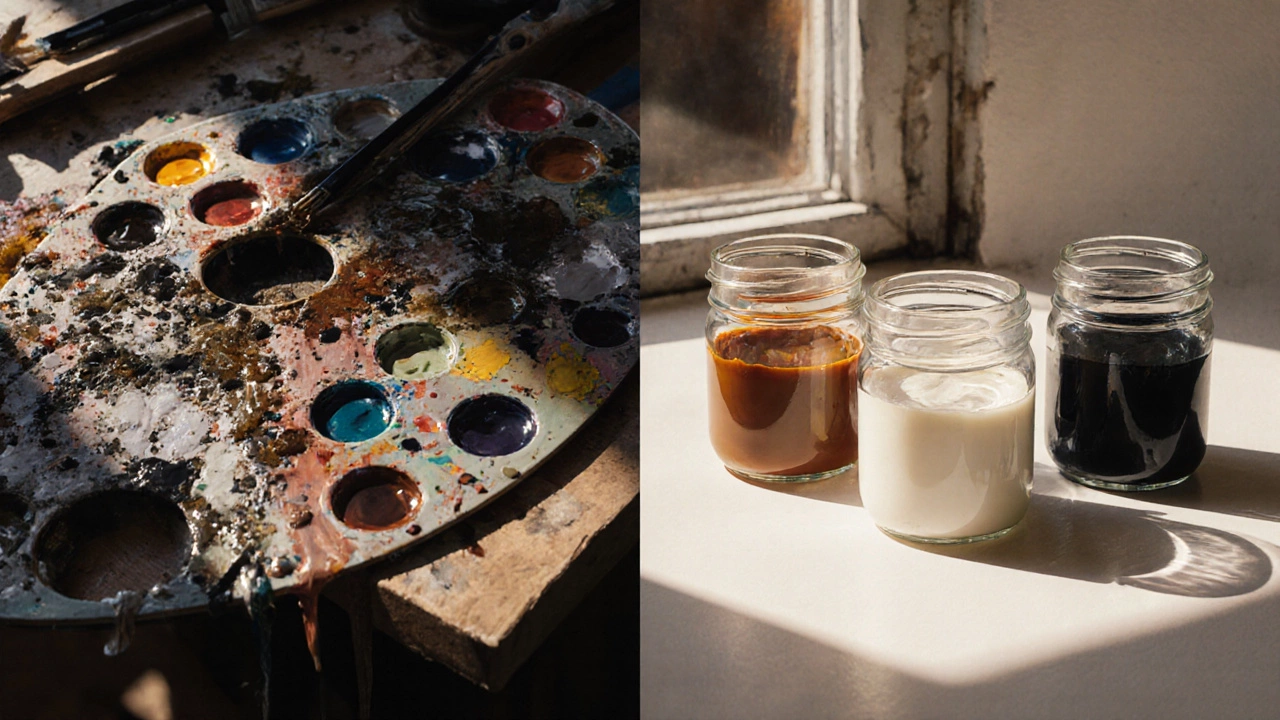Understanding the Three-Bucket Rule in Oil Painting
14 Oct 2025Learn what the three-bucket rule is, how to set it up, and why it improves value control and color consistency in oil painting.
Continue reading...When working with Three-Bucket Rule, a straightforward system that divides a creative process into three buckets – ideas, execution, and reflection – to keep projects organized and moving forward. Also known as 3‑Bucket Method, it helps artists balance inspiration with practical output. The rule three-bucket rule encompasses three core activities: collecting concepts, turning them into finished work, and reviewing the results for future improvement. It requires clear segmentation, which in turn supports effective Art Project Management, the planning, organizing, and overseeing of artistic works from start to finish. Successful implementation also leans on Creative Collaboration, the joint effort of multiple artists or stakeholders sharing ideas, skills, and resources, because collaboration shapes the ideas bucket and enriches execution. Finally, the rule drives efficient Resource Allocation, the thoughtful distribution of time, materials, and energy across project phases. By linking these entities, the three-bucket rule creates a logical flow: ideas feed execution, execution uses allocated resources, and reflection feeds back into new ideas.
The three-bucket rule isn’t limited to one style; it adapts to graffiti, street art, sculpture, digital illustration, and even photography. For a graffiti artist, the ideas bucket might hold tag concepts and color palettes, while the execution bucket covers wall scouting, surface prep, and spray technique. A sculptor can store material experiments and form sketches in the ideas bucket, shape the piece in the execution bucket, and then step back to critique in the reflection bucket. Digital artists benefit by sorting mood boards, brush presets, and coding snippets before moving into the creation phase and later reviewing user feedback. Each discipline follows the same semantic triple: three-bucket rule → organizes workflow → enhances output quality. The rule also influences project timelines, budgeting, and team communication, because when every participant knows which bucket they’re contributing to, overlap and confusion drop dramatically. This universal applicability explains why the tag pulls together articles on street art purpose, contemporary art principles, painting techniques, and even salary guides for digital creators – all share the underlying need for structured creativity.
Putting the three-bucket rule into practice means setting up three simple containers, either physically or digitally, and habitually moving work through them. Start each week by dumping fresh ideas into the first bucket, schedule dedicated execution blocks, and close the cycle with a brief reflection session that notes what worked, what didn’t, and what sparks the next round of ideas. Over time, you’ll notice smoother project pipelines, fewer missed deadlines, and a clearer sense of artistic growth. Below you’ll find a curated collection of articles that dive deep into the rule’s facets – from street art purpose and contemporary art principles to practical guides on painting techniques and managing artistic careers. Explore these resources to see the rule in action and pick up actionable tips you can apply to your own creative journey.

Learn what the three-bucket rule is, how to set it up, and why it improves value control and color consistency in oil painting.
Continue reading...